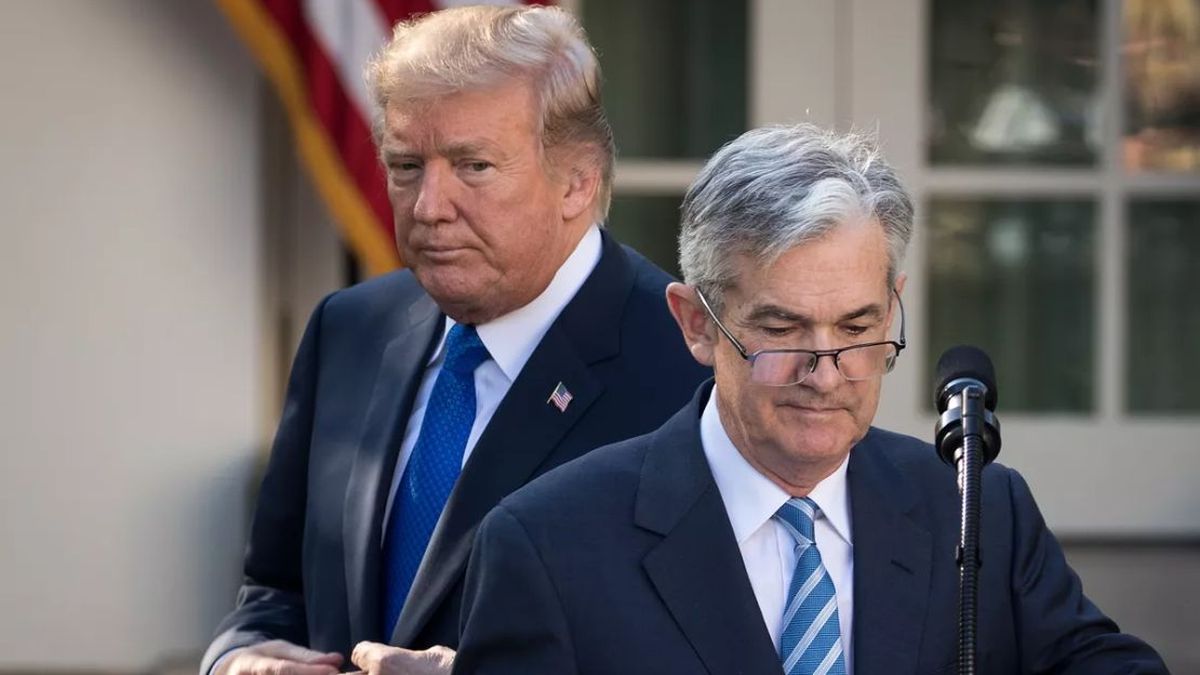Federal Reserve officials are set to cut their key interest rate for the second straight time on Thursday, responding to a steady slowdown in inflationary pressures that exasperated many Americans and contributed to Donald Trump’s election victory.
In Europe there is also news from some central banks. A rate cut by the Bank of England (BoE) is likely. In Norway, interest rates were kept at their highest level in 16 years and Sweden cut them by 50 basis points and anticipated further cuts. This Thursday, it is assumed that the Federal Reserve will cut rates, but it will set a new objective: decipher the new panorama after Trump’s arrival at the White House.
How did you anticipate Scopethe market is betting that the FOMC will cut a quarter point (25bp) the federal funds rate at the end of its meeting this Thursday, which would place it in a range of 4.5% to 4.75%, according to the FedWatch tool, which predicts movements based on future federal funds data.
The Fed’s future moves are now more uncertain after the election, given that Trump’s economic proposals have been widely noted as potentially inflationary. His election also raises the possibility of White House interference in Fed policy decisions, as Trump proclaimed that, as president, should have a say in central bank interest rate decisions.
The Federal Reserve has long defended its status as an independent institution capable of making difficult interest rate decisions, free from political interference. However, during his previous term in the White House, Trump publicly attacked Fed Chairman Jerome Powell after the Federal Reserve raised rates to combat inflation, and he could do so again.
The economy is also clouding the picture, showing mixed signals: Growth is strong, but hiring is weakening. Despite this, consumer spending has been healthy, fueling concerns that cutting borrowing costs may not be necessary and that doing so could overheat the economy and even reignite inflation.
Wall Street and the Fed
Financial markets are issuing another challenge to the Fed, with investors sharply raising Treasury yields since the central bank cut rates in September. The result has been an increase in borrowing costs across the economy, diminishing the benefit to consumers of the half-point cut in its benchmark rate, announced after the Fed’s September meeting.
For example, the average 30-year mortgage rate in the US fell over the summer when the Fed signaled it would cut rates, only to rise again as investors anticipated higher inflation, larger federal budget deficits and a faster economic growth under a President-elect Trump. In what Wall Street has called the “t Trump trade,” stock prices also soared on Wednesday, and the value of bitcoin and the dollar rose. Trump had endorsed cryptocurrencies during his campaign, and the dollar would likely benefit from higher rates and the widespread increase in tariffs that Trump has proposed.
Trump’s plan to impose at least a 10% tariff on all imports, as well as significantly higher taxes on Chinese goods and carrying out a mass deportation of undocumented immigrants, would almost certainly fuel inflation. This would make it less likely that the Fed will continue cutting its key rate. Annual inflation as measured by the central bank’s preferred indicator fell to 2.1% in September.
Economists at Goldman Sachs estimate that Trump’s proposed 10% tariff, along with his taxes on Chinese imports and cars from Mexico, could push inflation back up to around 2.75% to 3% by mid-2026.
federal reserve fed usa powell.jpg
Investors expect decisions from other major central banks, such as the Bank of England (BoE), although market expectations revolve around the Fed’s decisions.
Such an increase would likely disrupt future rate cuts that the Fed had signaled in September. At that meeting, when policymakers cut their key rate by half a point to around 4.9%, officials said they anticipated two additional quarter-point cuts later in the year, one on Thursday and another in December. and then another four cuts in 2025.
However, investors now see rate cuts as increasingly unlikely next year. The perceived probability of a rate cut at the Fed’s January 2025 meeting fell to 28% on Wednesday, from 41% on Tuesday and from nearly 70% a month ago, according to futures prices tracked by CME FedWatch .
Rising borrowing costs for things like mortgages and auto loans, even as the Fed is cutting its benchmark rate, has posed a potential challenge for the central bank: Its effort to support the economy by lowering borrowing costs may not bear fruit if investors are acting to raise long-term interest rates.
The economy grew at a solid annual rate of just under 3% over the past six months, while consumer spending, driven by higher-income shoppers, rose sharply in the July-September quarter. At the same time, companies have slowed down their hiring, and many unemployed people are struggling to find work. Powell has suggested that the Fed is lowering its key rate in part to shore up the labor market. But if economic growth continues at a healthy pace and inflation rises again, the central bank will be under increasing pressure to slow or halt its interest rate cuts.
Source: Ambito
I am an author and journalist who has worked in the entertainment industry for over a decade. I currently work as a news editor at a major news website, and my focus is on covering the latest trends in entertainment. I also write occasional pieces for other outlets, and have authored two books about the entertainment industry.




